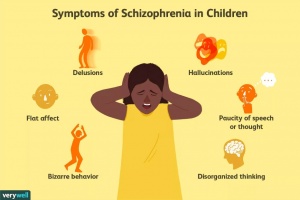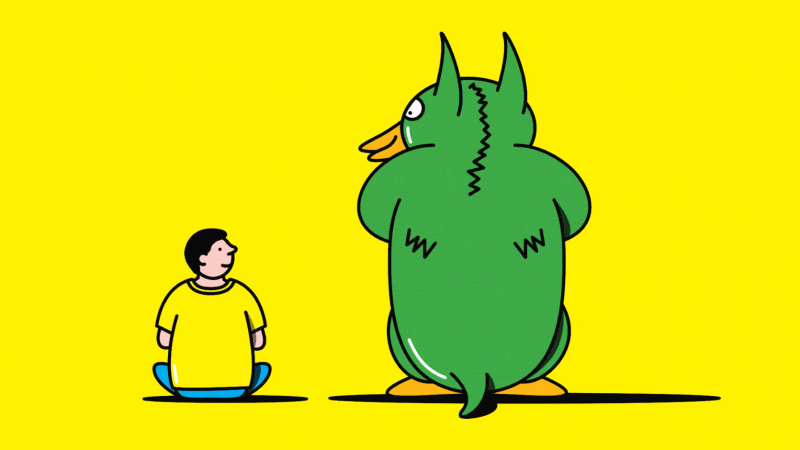Prevalence of Schizophrenia in Adolescents
Childhood-onset schizophrenia (COS) is very rare. It is only considered to be COS when diagnosed in children under 13, but full onset of the disease often does not occur until late adolescence or early adulthood. Although, if a child is experiencing hallucinations, delusions, or psychosis (more of which we will get into later) this can definitely be a cause for concern. It is important to understand that many children display unusual behavior; their brains are not even near to being fully developed! Also, before jumping the gun on schizophrenia, these symptoms can point to other psychiatric disorders such as depression, anxiety, and autism. A common worry that I have seen for parents is a child’s development of an imaginary friend. Is it an hallucination, a delusion, or simply a child with a healthy imagination?
What are Imaginary Friends?
Imaginary friends, also known as imaginary companions (ICs), have been seen throughout adolescent’s lives for years. It is by far not an uncommon phenomenon. Research even goes so far as to show that 65% of children up to age 7 experience an IC (Taylor et al., 2004). There are multiple reasons why adolescents may develop an IC:

- Exploration
- Companionship
- Emotional support
- Overcoming loneliness
- Traversing relationships
Each of these reasons may be considered beneficial to a child’s development, rather than detrimental (Figure 1). Research has shown that benefits may include advanced social cognition, healthy coping strategies, superior emotional intelligence, and especially heightened creativity (Majors & Baines, 2017)! Imaginary friends can take any form that may be important to the child, whether that be a person, animal, or stuffed animal. More likely than not, ICs are a healthy aspect of child development, and it is important to understand the difference between imaginary friends and schizophrenic hallucinations.
Hallucinations and Delusions in Schizophrenia
Often times, parents either disregard the presence of an imaginary friend, or discourage the act altogether, due to worries in their child’s perception of reality (Majors & Baines, 2017). Although, as described above, ICs differ greatly from symptoms seen in schizophrenia such as hallucinations and delusions. Hallucinations can come in many different forms, including visual (sight), auditory (hearing), olfactory (smell), and tactile (feelings). In the case of schizophrenia, the individual does not understand these hallucinations are fake, and they are not in control. In children with imaginary friends, they most often understand that their friends are not real, and the child is in control of them (Fritz, 2015). Delusions are beliefs that do not align with reality. These include beliefs that someone is planning to harm them, beliefs that one is ill, beliefs that someone is in love with them, or beliefs that one is superior to others. Again, this is far different from a child’s development of an imaginary friend, as they are not out of touch with reality.
When to Take Action
A parent should become concerned if their child beings displaying these types of behavior (Fig. 2).

- Hallucinations (as described above)
- Delusions (as described above)
- Disorganized speech or thought
- Inappropriate or odd behavior for child’s age
- Only speaks when spoken to; replying with short answers
- Flat, monotonous facial expression
Beyond this, it is important to understand that schizophrenia in children is very rare. It is also a disorder of development, so major symptoms often do not show until late adolescence or teen years. Also, many of these symptoms correlate with other psychiatric illnesses that are not quite severe as schizophrenia, and often enough, they are just “symptoms” of being a developing kid. Although, if a parent is still concerned, it can never hurt to get a check-up!
Article Summary
Schizophrenia is a developmental disorder with a variety of positive and negative symptoms. The article focuses specifically on the role of the Wnt signaling, GSK3ß, and dopamine release. When there is an increase in dopamine, this inhibits Akt, leading to an increase in activation of GSK3ß. In regard to Wnt signaling, increases in dopamine also inhibit TCF/LEF-mediated transcription through the direct sequestering of ß-catenin. A primary treatment for schizophrenia, lithium, acts through the direct inhibition of GSK3ß, leading to an accumulation of ß-catenin and therefore, TCF/LEF-mediated transcription. There are also multiple genetic factors involved, primarily DISC1. DISC1 has been shown to inhibit GSK3ß, but it is dysfunctional in schizophrenia. Through this article, it appears as though the inhibition of GSK3ß, a decrease in dopamine release, and an upregulation of ß-catenin activation and TCF/LEF-mediated transcription are plausible targets for schizophrenia treatment (Singh, 2013).
References
Fritz, G. K. (2015). Imaginary friends . CABL, 31(5). https://doi.org/https://doi.org/10.1002/cbl.30041
Majors, K; Baines, E; (2017) Children’s play with their imaginary companions: Parent
experiences and perceptions of the characteristics of the imaginary companions and purposes served. Educational and Child Psychology , 34 (3).
Singh, K. K. (2013). An emerging role for Wnt and GSK3 signaling pathways in Schizophrenia.
Clinical Genetics, 83(6), 511–517. https://doi.org/10.1111/cge.12111
Taylor, M., Carlson, S. M., Maring, B. L., Gerow, L., & Charley, C. M. (2004). The
Characteristics and Correlates of Fantasy in School-Age Children: Imaginary
Companions, Impersonation, and Social Understanding. Developmental Psychology,
40(6), 1173–1187. https://doi.org/10.1037/0012-1649.40.6.1173
